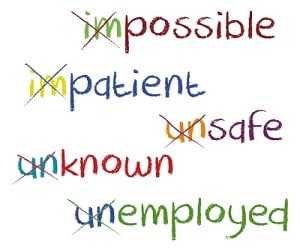What Are Emotions

the-emotions.com/emotion-sadness.html” target=”_blank” rel=”noreferrer noopener” aria-label=”Sadness (opens in a new tab)”Sadness: It is a negative emotion that is identified by the decline of chronic mood. It can express in the form of a slight decay to an intense penalty. Certain studies imply that it can double the chances of having heart attacks.
- Surprise: The surprise produced by something unknown or unexpected, it can also be a reaction to a discrepant event or a change of plans.
- Anger: Anger arises when a person faces frustration or aversive situations. It interrupts the cognitive processes that are in progress and focus attention on the expression of adverse effects. It may be related to hypertension or angina.
- Happiness: Arises when evaluating an object or event as favorable. It appears when some goal is achieved and is related to positive feelings for health.
[adinserter name=”Block 2″]
However, in 1999 the list was expanded for the inclusion of a series of additional basic emotions such as excitement, shame, contempt, satisfaction, fun, and pride.
By 1980, Robert Plutchik unveiled another emotion classification system. This system had the name of the “wheel of emotions.” It shows how the various human emotions can be mixed with each other, just as the primary colors can create new colors with their combination.
Plutchike explained that eight emotional dimensions are primary and opposed. Then having joy in the face of sadness, he will face fear, the surprise in front of the anticipation, and trust in the face of disgust.
What are emotions according to researchers

Throughout history, multiple researchers have tried to define emotions. These are some world-renowned concepts:
Candace Pert: The American neuroscientist and pharmacologist Candace Pert described emotions as informational content. It exchanged using as a means the psychosomatic network with the organs and systems that are part of the process. With this information, emotions travel through the realities of the mind and body.
Antonio Damasio: For the Portuguese neuroscientist Antonio Damasio, emotions are a set of actions that occur even in bacteria. For example, experiencing fear can generate facial changes, as well as in the heart or skin. Emotions are far from feelings because these are the mental experience of all those bodily changes.
Paul Ekman: Recognized as one of the pioneer psychologists in the study of emotions and one of the most prominent psychologists of the 21st century, Paul Ekman defined emotions as essential parts for the construction of the human psyche. Thanks to his theory, he identified emotions in six basic ones, as already mentioned.
Barbara Fredrickson: The American psychology professor Barbara Fredrickson created a model for explaining the functions of positive emotions as opposed to negative ones. For her, positive emotions cause changes in cognitive activity and, in the background, produce changes in physical activity. As is the negative emotions lead to urgent actions.
Robert Plutchik: The American psychologist Robert Plutchik was responsible for developing an evolutionary theory about emotions. For this, emotions considered as psycho-physiological processes of our behavior, which induce to act. They are moods where there is a vast mental and organic activity. In emotions, there are also physiological, social, and psychological aspects involved.
Robert Zajonc: On the other hand, Robert Zajonc’s theory of Affective Primacy proposes that emotion and cognition are two independent processes from each other. Something contrary to most emotions theories. In this theory, it suggested that emotion arises and precedes the cognitive reaction. It even implies that emotions exist without any cognitive processing.
Emotions, according to researcher William James, are caused by our interpretations of the events that unleash a psychological reaction. [2]
Emotions consist mainly of three elements:
- Its origin, arise from within us, not by mere observation. For example, rage.
- The body responds, For example: stitch in the stomach.
- The expression of them. For example: shout.
An emotion is an interpretation of an event, and what we feel is the response to the emotion. Emotions control our thoughts, and therefore, our behavior in general. They also affect our bodies and, therefore, our health.
An example of how emotions are triggered would be the following:
- In the presence of an event (my mother yells at me)
- We interpret the situation according to our beliefs (I will never do anything right).
- Then our emotion arises (Frustration, anxiety, anger, etc.), as a consequence of what we feel from our interpretation of the event.
- Then, we take action (behavior) based on our beliefs and emotions; then, we feel the same in our body (tension, acidity, etc.).
In general, we repress emotions because we have been educated with the belief that they are wrong, so we deny them. Repressed emotions are in our bodies until we decide and learn to free ourselves from them. If we fail to release them, we will feel fatigued and often depressed. They will affect our relationships and can cause serious illness.
Something very interesting that we must realize is without releasing the emotions of our past, our reactions in the present moment are going to be reactions of the past of unresolved emotions.
What does this mean? In the case that you have previously reported, if we do not overcome the rage or frustration of our mother’s screams, we might find ourselves, for example, a boss shouting at us. This situation automatically creates that we remember that anger or frustration that we did not resolve from the past and behave in the same way in the present. Reacting.
Some ways we use to avoid feeling emotions [3]
- Overeating . Compulsive overeaters feel better when they eat denying their emotional pain.
- Pretending that something never happened. Ignoring painful events so that you might feel that everything is under control.
- Excessive drinking of alcohol. Excessive drinking can make you feel to talk more , it can make you feel with courage and so on.
- Drugs can make you to feel free denying what you feel from painful experiences.
- Tranquillizers make you are feeling more bearable.
- Exercising compulsively is a distraction to avoid feeling.
- Always busy so you can’t feel, it is a way to get distracted .
- Intellectualizing and analyzing a way to numb what a person feel. Thinking too much and rationalizing is an strategy to avoid feelings.
- Excessive TV another way a person can avoid feeling.
We must understand that emotions are neither good nor bad and we must learn to recognize and feel them in order to release the negative pains and traumas that do not support us at all.
References:
§ https://psicocode.com/psicologia/que-son-las-emociones-definicion-caracteristicas-tipos/
2 .James, William. (1884). What is an emotion? Mind, 9, 188-205.
§ https://www.psicoactiva.com/blog/que-son-las-emociones/
3 . Spiritual.com.au. “Emotions Pt2 – How we repress our emotions”. Retrieved July, 2010, from https://www.spiritual.com.au/2011/07/emotions-pt-2-how-we-repress-emotions/
§ https://psicopedia.org/1369/emociones-que-son-cuantas-hay-como-determinan-nuestra-conducta/
§ https://es.wikipedia.org/wiki/Candace_Pert#Emociones
§ https://gerryvelasco.wordpress.com/2014/09/13/las-emociones-positivas-de-barbara-fredrickson/
§ https://psicologiaymente.com/inteligencia/teoria-primacia-afectiva-robert-zajonc






